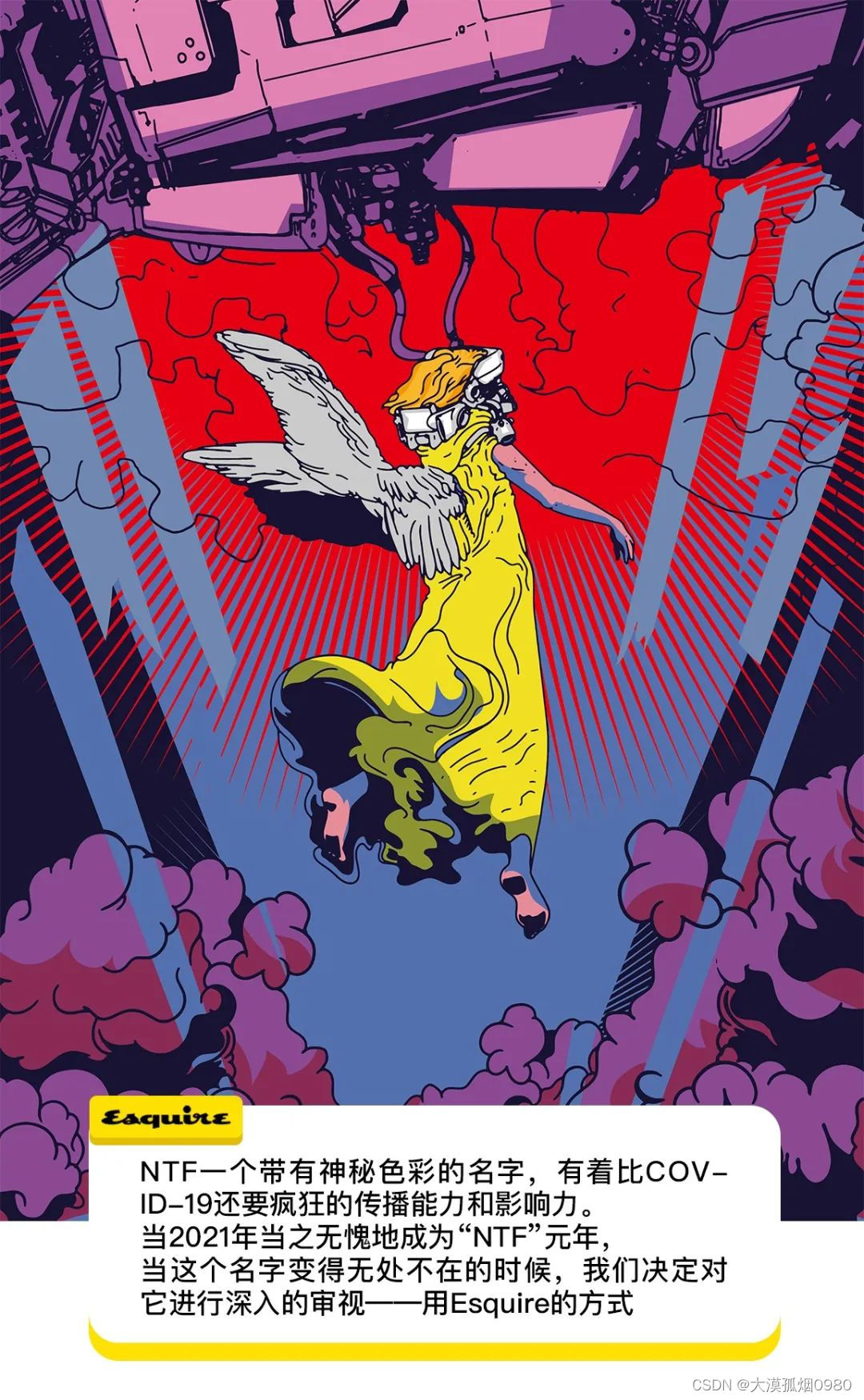
On March 11, 2021, Christie's auction house sold the digital collage work "EVERYDAYS: THE FIRST 5000 DAYS" (EVERYDAYS: THE FIRST 5000 DAYS) by artist Mike Winkelmann ( Beepie ) for $69 million, The creative concept and form of this work are not new, and the logic behind its sky-high price is the special presentation form/medium of the work: "Non-Fungible Token" (NFT, Non-Fungible Token) based on blockchain technology.
In April of the same year, Sotheby's auction house's first NFT project sold a total of tens of thousands of copies of "The Fungible" (The Fungible), a three-day collaboration with digital artist Pak, for a total of 16.8 million US dollars; In July, the Hermitage Museum in Russia made five works of George Oni, Leonardo, Kandinsky, Monet and Van Gogh into NFTs, which fetched $440,000. The curator excitedly declared that it would be "An important stage in the development of the relationship between people and money, between people and things".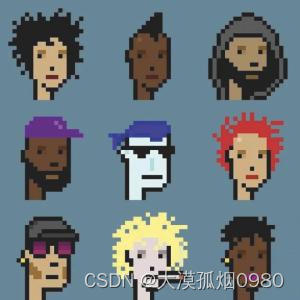
1. In January, CryptoPunks began to attract people's attention, and
the price slowly rose from free to $1 million or even $11 million.
CryptoPunks are suddenly an NFT token.
Although NFT is no longer new in the field of technology, 2021 is a well-deserved "NFT first year" for the art world or mass media. When ordinary people who are unable and unwilling to figure out what non-homogeneous tokens are are sighing at sky-high prices, the NFT world is in a carnival-like atmosphere. Everything hints at the bright future of NFT and stimulates new A round of buying and selling.
Why did that line of text, or pixel by pixel, or 10,000 avatars that looked so similar but slightly different, cause such an uproar? Why can these pictures and audios that can be directly saved as screenshots or right click be sold at such an expensive price? Fanatical supporters will give various answers: artistic value, community atmosphere, early dividends, etc. But in our opinion, there is one and only one real answer: just because they are all "NFT".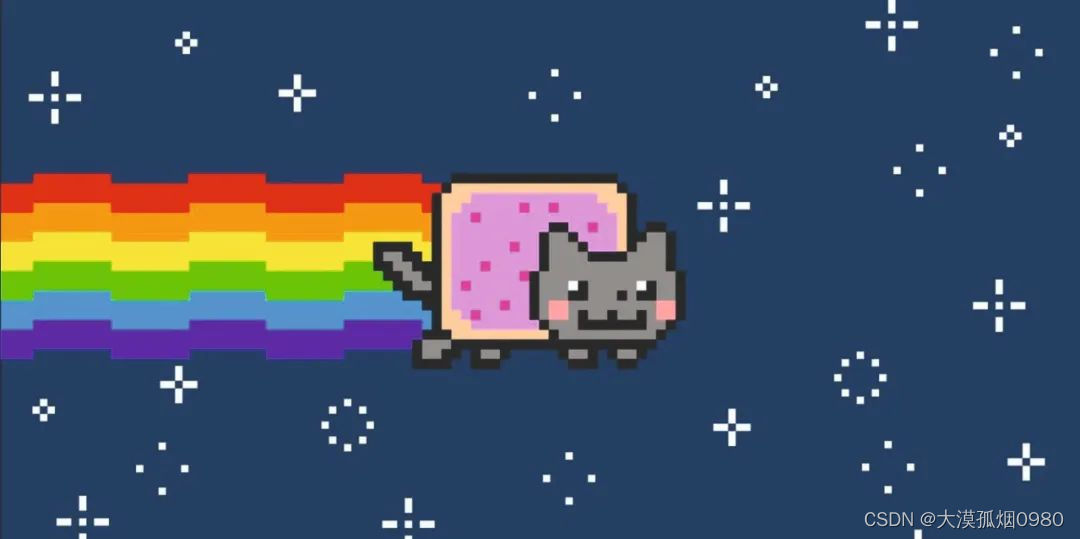
2. On February 19, an NFT version of Rainbow Cat (Nyan Cat) sold for $600,000.
This phenomenon has made NFT the focus of attention again, and
a large number of articles about NFT have appeared on the Internet.

The biggest feature of NFT is that once you try to search for its definition on the Internet, you will be confused by other definitions: The full name of NFT is Non-Fungible Token, which is usually translated as "non-fungible token ". But what is "non-homogeneity" and what is "token"? Going down this route, you will find more and more other definitions, so that you are finally trapped in the maze of concepts and have nowhere to escape. You can only believe or resist religious rhetoric most intuitively: NFT is art future, or the emperor's new clothes. Naturally, we will not make such rhetoric, and at the same time, we do not want to make things too complicated, so let us simplify a little bit and change the definition of NFT into the following three parts: 1. NFT
( Non-homogeneous token) is a special token (token) on the blockchain;
2. Tokens are the most common application on the blockchain;
3. The blockchain is a new technology that has developed by leaps and bounds in the past ten years. technology.
Start with the most basic definition: In the famous 2017 essay "The Social Life of Bitcoin," Nigel Dodd, head of the sociology department at the London School of Economics (LSE) Dodd nicely summed up the nature of blockchains in one sentence: “Blockchain technology is really just a database that can only be thought of as a distributed ledger...in this notion, every action or transaction we Voting, buying real estate, medical vaccination, getting married, getting a degree, etc.) are all unique and verifiable events.” To simplify again, according to Dodd’s opinion, the essence of the blockchain is a database for storing data. And most blockchain projects exist as "distributed ledgers".
3. On February 28, the musician 3LAU released 33 NFT works to celebrate
the 3rd anniversary of his album "Ultraviolet", with a total sales of 11.7 million US dollars. "Distributed" means "public" most of the time. If a family uses one ledger to keep accounts, and each other can see all their income, expenses and expenditure details, this is the most basic "distributed ledger". If the concept of family ledger is expanded countless times, everyone on the earth can record their own income and expenditure in the same place, then without the help of accountants, everyone can check whether the amount in the ledger is correct and reasonable. At this time, we A larger set of "distributed ledgers" is obtained. The most basic unit in a ledger is the "amount of money", that is, "currency", such as one US dollar, ten pounds, one hundred RMB or one hundred thousand baht. So what is a token? From the perspective of etymology, the word token in modern English comes from tācn in Old English, and tācn has the meanings of sign, symbol, evidence, etc. ; going all the way back to the Proto-Indo-European root deyk-, which has a meaning close to "to show/guidance/teach". In other words, the so-called "token" is an "agent" or "representative" of something. It shows you something that does not exist in front of you, guides you towards something, or proves the existence of something. Other than that, the token itself is just a shell.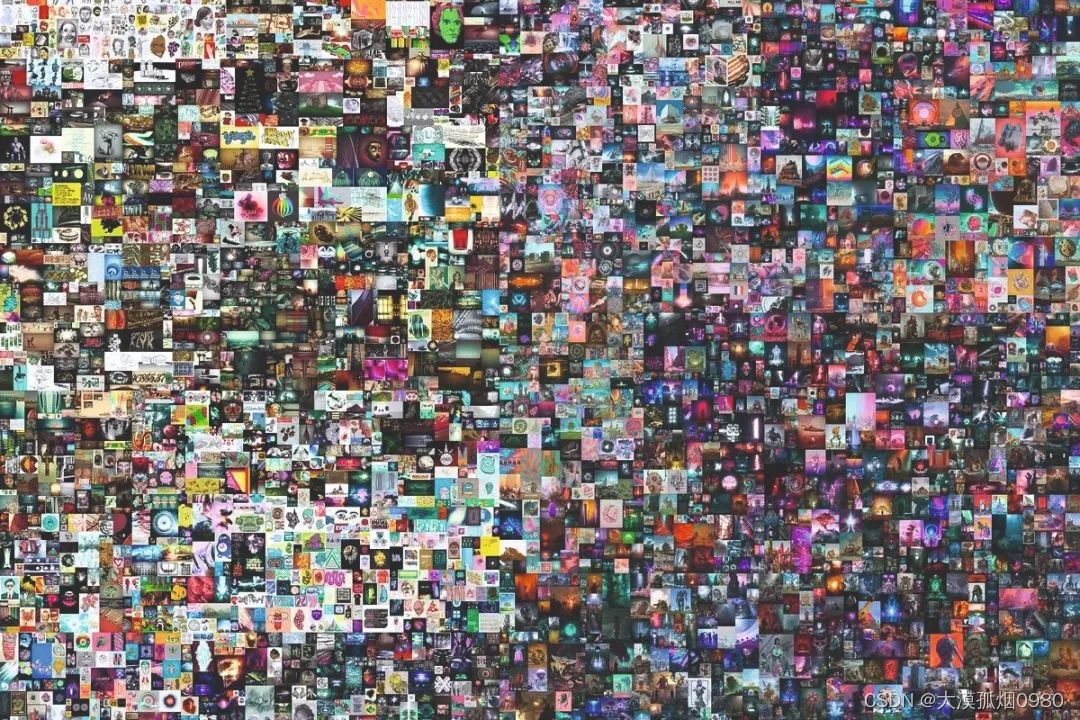
4. In March, Mike Winkelmann (Beeple)'s NFT version of "Every Day and Night: The First Five Thousand Days"
(EVERYDAYS: THE FIRST 5000 DAYS) was sold at Christie's auction house for a sky-high price of US$69.35 million.
This is the first time that a traditional auction house has set foot in NFT, and it is this successful auction that has
made many people decide to enter the NFT industry.
Unlike most people's imagination, "token" is not an antonym of "legal tender" or "currency". On the contrary, until the development of the digital system of modern banks, the most commonly used currency in people's daily life is almost a " Token". Taking banknotes or coins as an example, we can split "money" into two parts: one part is the actual purchasing power of money; the other part is the material embodiment of money. For example, a one-dollar note is both a "dollar" and a "piece of paper". Only with the approval of the state can this piece of paper be used for transactions and realize value. In other words, the "paper" at this time is just a proxy and representative of "currency", and it is a means to show you the purchasing power of "currency".
In a sense, the history of modern currency is a process in which "tokens" continue to replace various direct currencies (such as gold, silver and other precious metals) but gradually become invisible. For the ancients, the distinction between "tokens" and "currency" was very clear: no one would be confused between a Song Dynasty Jiaozi with a face value of two taels and the silver represented by this Jiaozi. But after modern currencies gradually moved away from the gold standard, the concept of "tokens" became abstract. Especially after the popularization of digital systems and various payment software in modern banks, people have become accustomed to the concept that money can be split arbitrarily (so it is equivalent to some kind of number, as if it does not need any physical support). "Number" and what "purchasing power/value" it actually refers to becomes more and more difficult.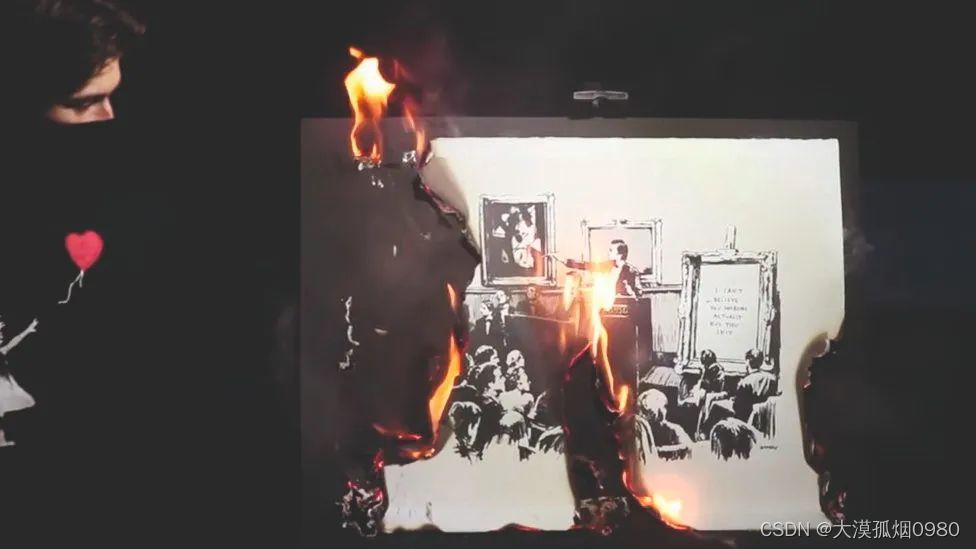
5. In March, a company purchased a piece of Morons, a work by street graffiti artist Banksy (Banksy), for US$95,000,
and then filmed the process of a person burning
the , and generated this video as an NFT The mission of the work is
"Banksy Burnt", completing the process of changing the existence form of a work of art from offline to online.
In May, Bored Ape Yacht Club (BAYC) became the dominant player in the NFT market Power.
People can not only join the BAYC community, but also use it as their avatar, and
Christie’s and Sotheby’s auction houses have also started auctioning BAYC. BAYC has also set off a wave of avatars (NFTfPFP NFTs).
“Tokens” have become so popular, So much so that the collision of the two concepts of "token" and "blockchain" will not produce any fresh chemical reaction, but will return to the more ancient "gold standard". In the forum discussion in 2008, Bitcoin Satoshi Nakamoto, the inventor of Bitcoin, threw out a very strange analogy in response to the question "Why Bitcoin can have value": "As a thought experiment, imagine a base metal that is as rare as gold, but has the following properties: 1) Drab gray... 5) Can be transmitted over a communication channel. " This is the initial concept model of Bitcoin: "base metals that can be transmitted through communication channels", which need to increase supply through digital "mining", and the total supply is strictly limited.
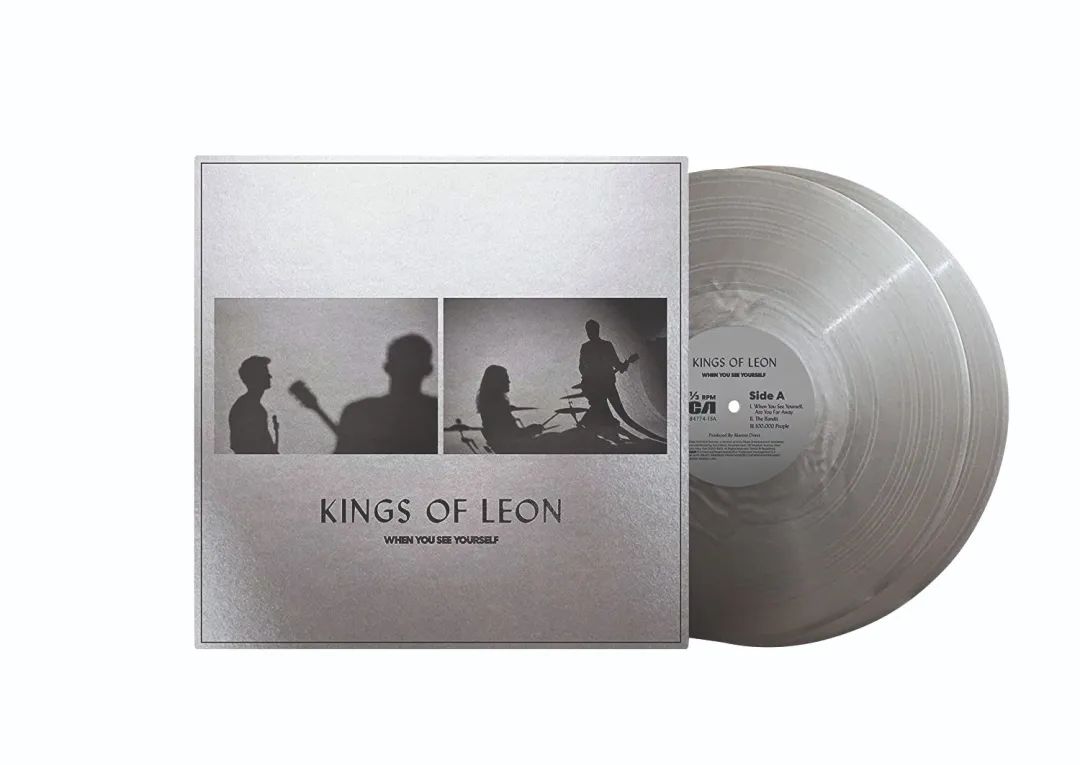
6. In March, Kings of Leon's rock group announced that their new album "When You See Yourself"
(When You See Yourself)
will only be released in the form of NFT.
For Satoshi Nakamoto, constructing a brand-new token system with "virtual metal" as the core is just a last resort creation: "I think the qualification of traditional currency is to assume that there are many competitive scarcity in the world. things, things that have spontaneous intrinsic value will definitely outperform those that don't. But if there isn't something in the world that has intrinsic value that can be used as money, that's just scarce but has no intrinsic value, I think people will still Accept.” Facing the world in financial turmoil, Satoshi Nakamoto firmly believed that modern countries have neither the ability nor the will to fight inflation, so it is necessary to use new technologies to revive the “gold standard” to fight future financial crises.
But this is not all about virtual currency. What people rarely realize is that the most interesting feature of virtual currencies is that, precisely because they are so illusory and out of reach, when trying to understand them, people have to adopt a retro idea: "Bitcoins represent some value" or " Bitcoin stores some value". The concept of "tokens" that has been almost forgotten by modern people is thus revived, forcing people to compare the numbers they see in the payment software with the numbers they see on the blockchain. Closely, the only difference is whether all circulation and storage information is recorded on a public ledger called the blockchain or on a bank's private ledger.
7. In May, 10,000 NFT works of Bored Ape Yacht Club (BAYC)
were sold online. This series of works imitates the avatar style of CryptoPunks,
but it is considered to completely reshape the NFT market because of the addition of community elements-customers who have purchased these apes
can participate in various social activities online and offline.
You may be wondering why it takes so much effort to understand the concept of "token", especially the process of "referring" and "representing" contained in "token"? Let us imagine such a problem: If NFT is a special token, and the essence of the token is some data (an entry) on the ledger, which can point to a certain purchasing power/value (whether as a metal currency or a modern legal currency) , then, how exactly and uniquely does an entry on the ledger point to a work of art or an ordinary item? More simply, how can a number be equal to an object, how exactly can a "one" on the ledger become "a painting" or "an apple"?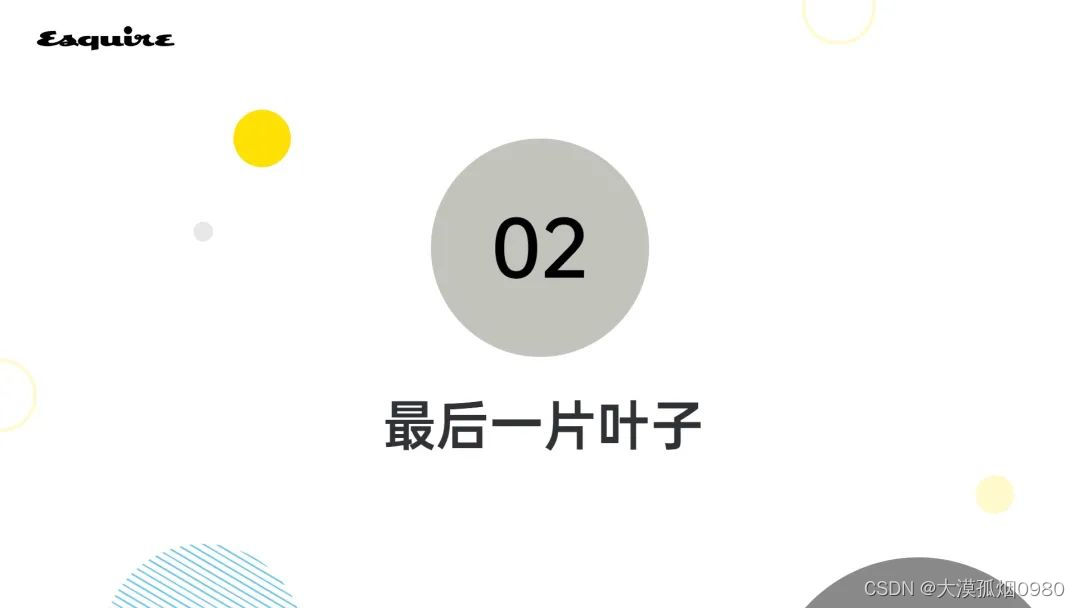
If there is no essential difference between tokens and ordinary money, only the ledgers that store them are different, then what does "Non-Fungible Token" mean? Simmel, a German sociologist at the end of the 19th century, made a classic thesis in "Philosophy of Money": Generally speaking, there are two logics of "nature" and "quantity" in the world, and the logic of people or things is more biased towards In terms of "nature", this means that "there are no two identical leaves in the world"; the logic of currency is more inclined to "quantity", which means that any two dollars can be exchanged at will. It is not difficult to understand that no matter in mathematics or in accounts, there are no two different one dollars, and one dollar can be exchanged directly and forever, which is the most basic attribute of modern currency.
On this basis, Simmel developed the most important conclusion that due to the continuous expansion of the influence of money, people in the modern world will gradually replace the logic of "quality" with the logic of "quantity". In other words, although there is indeed a gap between the two leaves, people don't care about all of this, but only that both leaves can be bought for only a dollar, so they "should be equivalent". You can also think about this issue with a more everyday logic: in the past, for you, the hand-knitted sweaters presented by relatives or friends were always different, and they were closely related to your own life and could not be measured by price; This kind of meaning has been lost. Different clothes are indeed different, but they can all be clearly marked and sold in batches.
Any individual can clearly feel that as the material becomes more and more abundant, the difference between different things becomes smaller and smaller. As connections become more accessible, the differences between different people are minimal; our relationship with things or people becomes more distant; and we believe that, if money can’t buy everything, it can buy most of the things we need. If this line of thinking is simplified to "everything that is not money can be measured by the logic of money", then the logic of NFT is just the opposite. money exchanged” to simulate “two different leaves”. To put it more simply, while the entire modern world is trying to turn all "one apple after another" into the numbers "one two three four" on the ledger, NFT is trying to turn the abstract "one two three four" back into concrete "one two three four" one or the other apple".
This statement is somewhat romanticized, but NFT does contain some kind of "nostalgic" logic. Let's imagine under what circumstances a token/currency becomes non-exchangeable. Suppose you have a British pound that you brought back from your honeymoon, and it has your memories condensed on it. It is indeed a token/currency, but it is not equal to other British pounds. Swapable/Non-Fungible Tokens”. This also means that we are trying to find some indivisible units in a counting system that can be arbitrarily divided: an NFT is not only a unit that is not arbitrarily interchangeable, but also an indivisible unit, just like the old one you brought back The pound sterling, because of the memories it contains, can no longer be turned into ten pounds or many pennies.
It doesn't matter which specific technical specification NFT achieves this, the key lies in this effort to try to reverse simulate "non-digital" characteristics in digital systems. All kinds of thought experiments related to it can be imagined, still taking the old pound as an example, if a certain wealthy businessman really wants to get my old pound, and is willing to pay a large sum of money in exchange for my private memories, then I do have There may even be a willingness to turn this "non-fungible and indivisible" special pound (in the sense that it's an NFT that's not on the blockchain) back into a bunch of regular banknotes. But this will not affect its attributes at all. Simmel pointed out long ago: the huge number itself contains a kind of sanctity, which can be regarded as a special "quality" rather than quantity. Therefore, it is precisely that large amount of money that proves the indivisibility and non-fungibility of this pound.
8. In August,
the Fidenza series launched by artist Tyler Hobbs on the generative art platform ArtBlocks
began to generate millions of dollars in transactions every day, and finally brought blockchain technology and software-generated art into people's vision.
Similar logic runs through all NFT transactions. Imitating what Marx said ("Das Kapital": "It is a thrilling jump from commodity to currency. If it falls, it is not only the commodity that breaks, but the owner of the commodity."), we can call it "NFT A thrilling jump". Most people don't really understand the essence of NFT as a "token", so they never realize that the NFT that circulates during the transaction is never "the artwork itself", but a string of "marks pointing to the artwork". ” (such as author, creation time, different attributes, picture URL, etc.). Due to the existence of a layer of referential relationship, the NFT being traded may not be recognized as the only mark of "work of art", and other forces must be used to provide protection for this. Specifically, it must be through a successful transaction. Only by converting the worthless data into the currency of existence value can the originally worthless digital token become a proof of rights almost equivalent to the artwork itself.
Undoubtedly, this is a tautological logic of circular argument: only NFTs that can truly represent works of art have economic value, but only NFTs that have economic value (successfully sold) can truly represent works of art. Once the thrilling jump is completed and the tautological logic is established, it supports the relationship between NFT and artwork very self-consistently. The real question is, is this property rights/pointing relationship the whole of NFT? Recalling Dodd’s statement that one feature of blockchain is: “In this notion, each of our actions or transactions (such as voting, buying real estate, medical vaccinations, getting married, earning a degree, etc.) Verified events." Just combine the accuracy of the blockchain itself with the "indivisible and non-interchangeable" characteristics that NFT tries to simulate, and we get a brand new miracle:
Imagine if we could store all private actions, events, records, and memories on the blockchain, and all these storages are "indivisible and non-interchangeable", then our memories and even our uniqueness will be reduced. Gaining complete assurance, we have the opportunity to publicize with precision the record of every action and event, and indeed of an entire human life. “Blockchain is attractive not only because it can remember every discrete event in the network, but more critically, its memory is invulnerable. Blockchain seems to promise a world of absolute certainty, although there is no God is present, but we have God-like guarantees." If there is indeed a "divinity" in the blockchain and NFT, it is this divinity, this unique precision, that gives tokens With the value of the original, the fake is given the status of the real.
Alright, let’s start with the introduction here today. I will take the time to continue explaining the history and development of NFT to you. Please pay more attention.